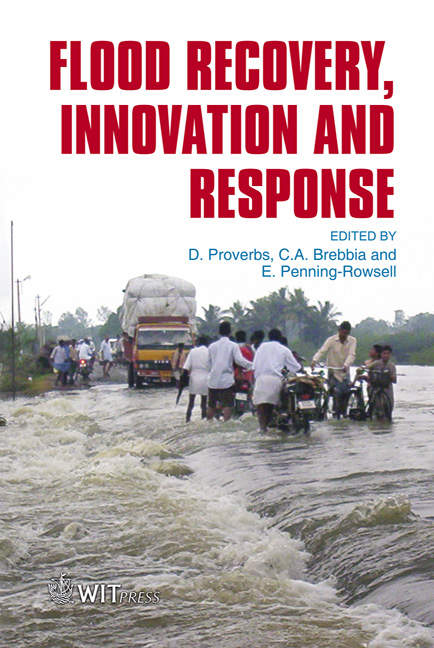Recent Developments In Loss Of Life And Evacuation Modelling For Flood Event Management In The UK
Price
Free (open access)
Transaction
Volume
118
Pages
10
Page Range
263 - 272
Published
2008
Size
503 kb
Paper DOI
10.2495/FRIAR080251
Copyright
WIT Press
Author(s)
D. Lumbroso & M. Di Mauro
Abstract
To date the work done in the UK to assess the loss of life and evacuation times for flood risk areas has been limited. To provide the most accurate assessment of loss of life and evacuation times a complex model is required. This paper details the application of a prototype, agent-based Life Safety Model (LSM) to estimate the loss of life in two areas of the Thames Estuary. The LSM models individual receptors (e.g. people and cars) and their dynamic interaction with the floodwater. The LSM estimates deaths from: drowning; exhaustion; building collapse; and vehicles being swept away, as well as evacuation times. The LSM offers a scientifically robust method of assessing residual risk behind flood defences and downstream of dams in terms of fatalities. Importantly, it allows the comparison of different emergency management strategies (e.g. the use of safe havens) that can assist in reducing the loss of life during future floods and dam breaks. The model was validated against historical data from the Canvey Island flood in 1953, during which 58 people lost their lives. The LSM was then applied to the Thamesmead embayment to assess the results for a range of scenarios. Keywords: evacuation modelling, flood event management, loss of life. 1 Introduction Despite the global impacts of floods there are a limited number of methods to estimate the loss of life and the evacuation times for flood events. Loss of life modelling can be performed at different levels of detail as follows: • Macro or overall event level where one mortality rate is applied to the whole of the exposed population;
Keywords
evacuation modelling, flood event management, loss of life.





